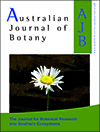
Australian Journal of Botany
Volume 69 Number 3 2021
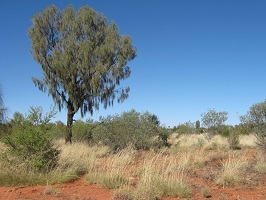
The Australian outback is dotted with iconic ring-shaped spinifex grasses, but ecologists do not have a convincing explanation for why they might grow this way. In this study, we showed that microbes in the soil under the grass species Triodia basedowii cause fewer seedlings to grow in the middle of the rings. Our findings suggest that soil microbes may contribute to the striking growth form of these important and widespread Australian grasses.
BT20122 Abstract | BT20122 Full Text | BT20122PDF (801 KB) | BT20122Supplementary Material (195 KB) Open Access Article
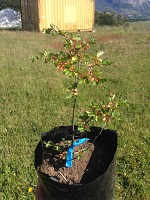
Climate change is altering precipitation regimes and ecosystem nutrient cycles; nitrogen and phosphorus are the most limiting nutrients to growth and therefore to forest carbon sequestration. We found that experimental drought increased leaf abscission for both deciduous and evergreen temperate species, but only evergreen saplings expressed reduced P proficiency and increased litter P losses, indicating that drought senescence was effective in reducing nutrient losses for deciduous species. A new drought regime could provoke continual phosphorus losses, with deciduous species potentially replacing evergreen species in phosphorus-limited environments.
BT20128Metabolite investments and stress levels among tissue compartments of Palaeomystella olygophaga (Lepidoptera) galls on Macairea radula (Melastomataceae)
 , Mariana Machado, Patrícia Dias Santos, Vitor Campana Martini and Denis Coelho Oliveira
, Mariana Machado, Patrícia Dias Santos, Vitor Campana Martini and Denis Coelho Oliveira 
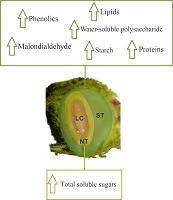
Galls may have tissue compartments, as previously observed for Macairea radula galls, with storage and nutritive tissues. Herein, we investigated the levels of oxidative stress, and whether there is a differential chemical investment in each tissue compartment. The malondialdehyde, phenolic content, water-soluble polysaccharide, starch, protein, and total lipid levels were higher in the storage tissue (ST), whereas the nutritive tissue (NT) had higher levels of total soluble sugars.
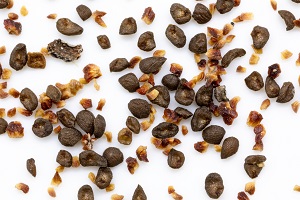
Understanding how temperature and moisture availability affect seed germination of plants from drought-prone areas is important for successfully managing habitats that are at risk from changes in climate and land use. We examined the germination response of four Eucalyptus species from north-west NSW and found all were drought-sensitive, with germination most likely to occur during cool and wet conditions. This information is key for conservation managers and restoration practitioners to identify when and how to conduct direct seeding of these key canopy species.
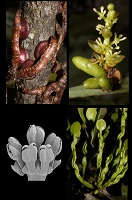
Most mistletoes successfully reproduce despite their hemiparasitic lifestyle and their remarkable modifications in flowers, fruits, and seeds. One of them, the New World Antidaphne, exhibits unisexual, extremely reduced flowers that use nectar and pollen instead of showy sepals or petals to attract pollinators and to ensure cross-fertilisation. The development and morphology of these flowers helped us to assess evolution and kinship of the genus with respect to their relatives in the remarkable sandalwood family.
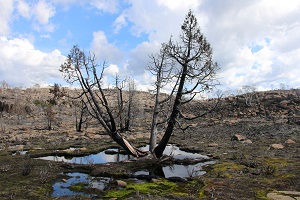
Athrotaxis cupressoides is an iconic, fire-sensitive, Tasmanian conifer. We re-surveyed populations burnt by wildfire in 2016, and found after 4 years, stem mortality was 69%, of which 97% occurred within the first year, and there was little regeneration. We conclude that rather than its adult stems being particularly fire-sensitive, A. cupressoides is vulnerable because it lacks reliable recovery mechanisms, either vegetatively or from a fire-resistant seed source, and is poorly dispersed.
BT20082Are phytotoxic effects of Eucalyptus saligna (Myrtaceae) essential oil related to its major compounds?
 , José M. Igartuburu, Gerhard E. Overbeck, Geraldo L. G. Soares and Francisco A. Macías
, José M. Igartuburu, Gerhard E. Overbeck, Geraldo L. G. Soares and Francisco A. Macías
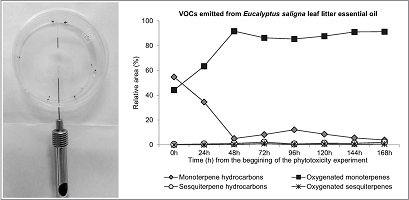
Effects of volatile organic compounds (VOCs) emitted from Eucalyptus saligna leaf litter essential oil and its major compounds were assessed on germination and growth of the weed Eragrostis plana. Phytotoxic effects were mainly related to an oxygenated monoterpene (eucalyptol), the main compound volatilizing in the airspace of Petri dishes, together with other minor compounds. Analysing the actual emission of VOCs is relevant to better comprehend compounds involved in phytotoxicity of a plant species.



